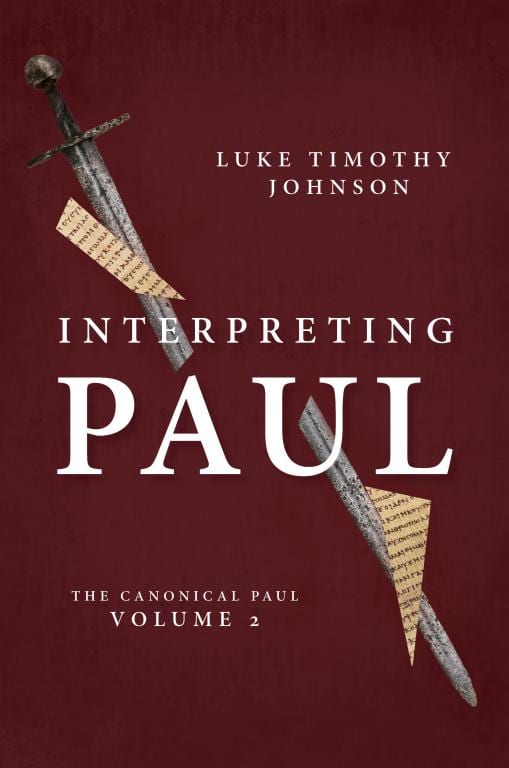If you read Luke Timothy Johnson’s Canonical Paul: Constructing Paul (Eerdmans) released back in March 2020, you might be interested in the sequel in his “Canonical Paul” series, Interpreting Paul (Eerdmans, May 2021).

Nine months is a long time to wait, but while you set aside a few bucks (retail $60; 600+ pp.) here is the description and table of contents to whet your appetite.
“For me, Paul has always been the most difficult and therefore also most delightful advocate and interpreter of the Lord Jesus Christ and of the human experience of God’s transforming power through Christ. In Paul’s letters above all I have found the quality of mind and the depth of conviction that could arouse in me both excitement and passion. And it is Paul’s letters, above all, that show how important and difficult is life together in the church.”
— from the preface
With the contextual framework in place from volume one of The Canonical Paul, Luke Timothy Johnson now probes each of the thirteen biblical letters traditionally attributed to the apostle Paul in a way that balances respect for historical integrity with attention to present-day realities. In doing so, Johnson reforges the connection between biblical studies and the life of the church, seeking to establish once again the foundational and generative role that the thirteen letters of Paul have had among Christians for centuries.
Far from being a “definitive theology” of Paul, or an oversimplified synthesis, Interpreting Paul provides glimpses into various moments of Paul’s thinking and teaching that we find in Scripture, modeling how one might read his letters closely for fresh, creative interpretations now and into the future. Approached in this way, both in minute detail and as a whole canon, Paul’s letters yield rich insights, and his voice becomes accessible to all readers of the Bible.
Table of Contents
Introduction
1. Romans 3:21–26 and the Faith of Jesus
2. The Social Dimensions of Sōtēria in Luke-Acts and Paul
3. The Transformation of Mind and Moral Discernment in Romans
4. Life-Giving Spirit: The Ontological Implications of Resurrection in 1 Corinthians
5. The Body in Question: The Social Complexities of Resurrection in 1 Corinthians
6. Glossolalia and the Embarrassments of Experience
7. God Was in Christ: 2 Corinthians 5:19 and Mythic Language
8. Truth and Reconciliation in 2 Corinthians
9. Ritual Imprinting and the Politics of Perfection
10. The Truth of Christian Experience: The Fourfold Narrative of Galatians 1–4
11. The Expression of Christian Experience: The Imperatives of Galatians 5–6
12. Paul’s Vision of the Church
13. The Rise of Church Order
14. Fellowship in Suffering: The Paradox at the Heart of Paul
15. Mystery and Metaphor in Colossians
16. Doing the Truth in Love: From Eros to Agapē
17. The Church as the Sacrament of the World in Ephesians
18. Discernment, Edification, and Holiness: 1 Thessalonians
19. The Apostle as Crisis Manager: 2 Thessalonians
20. Oikonomia Theou: God’s Way of Ordering Creation in 1 Timothy
21. 1 Timothy 1:1–20: The Shape of the Struggle
22. 2 Timothy and the Polemic against False Teachers: A Re-examination
23. The Pedagogy of Grace: The Experiential Basis for Character Ethics in Titus
Conclusion












